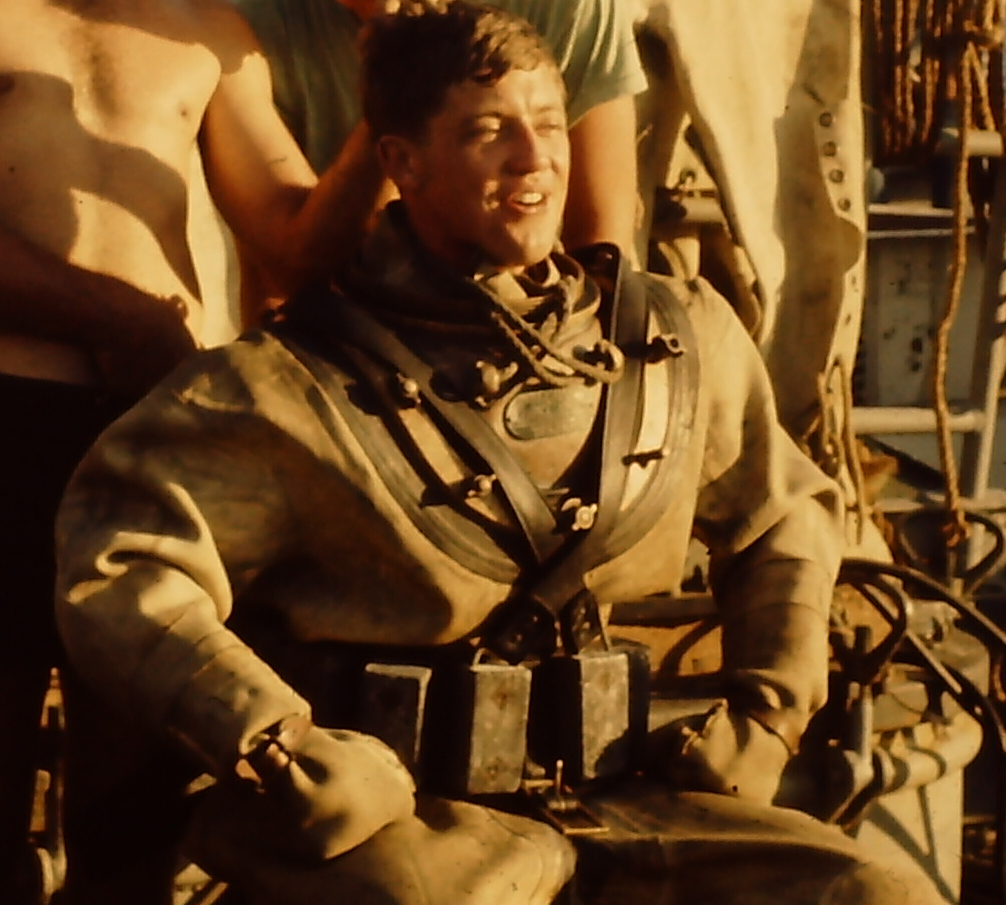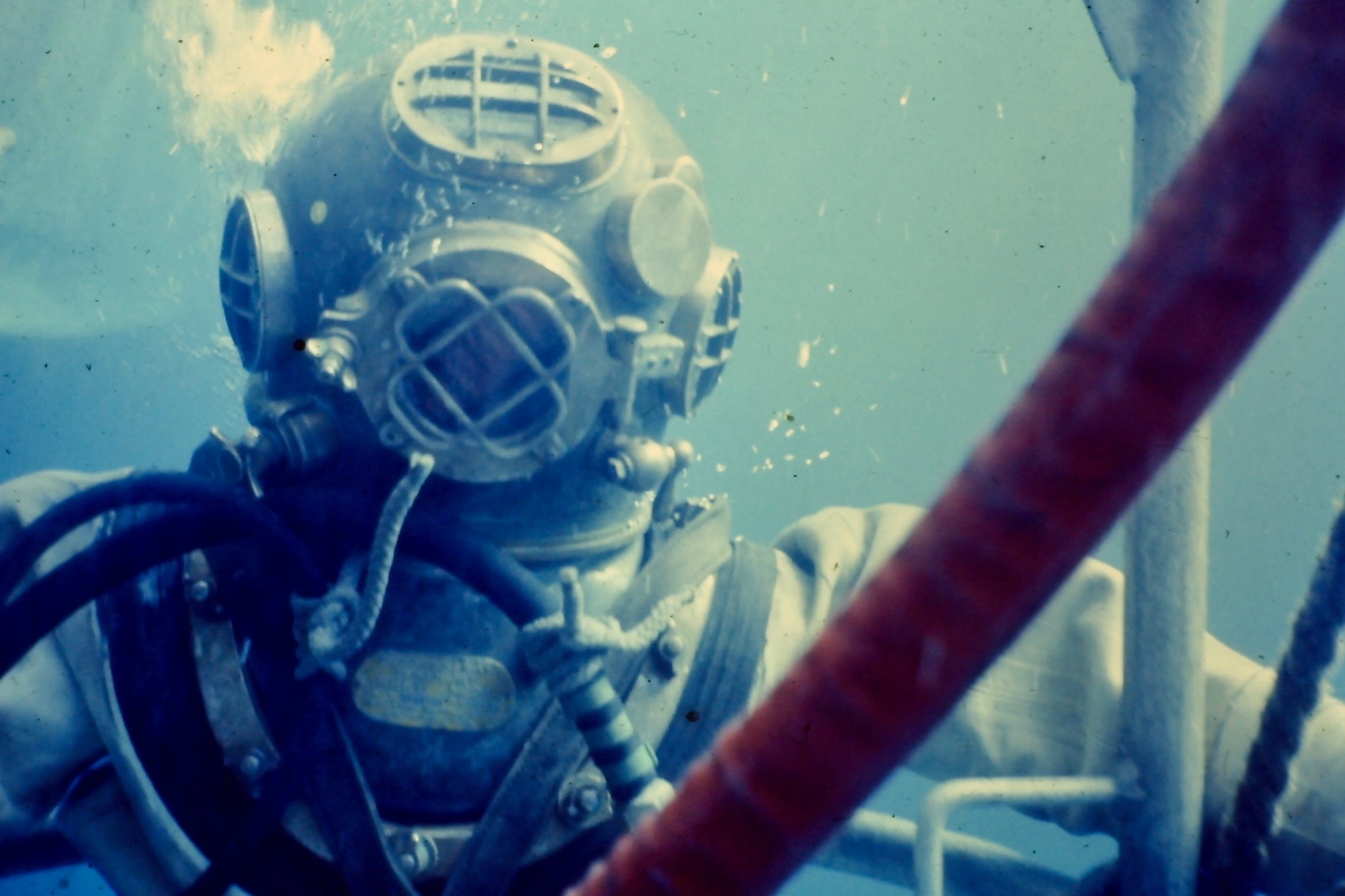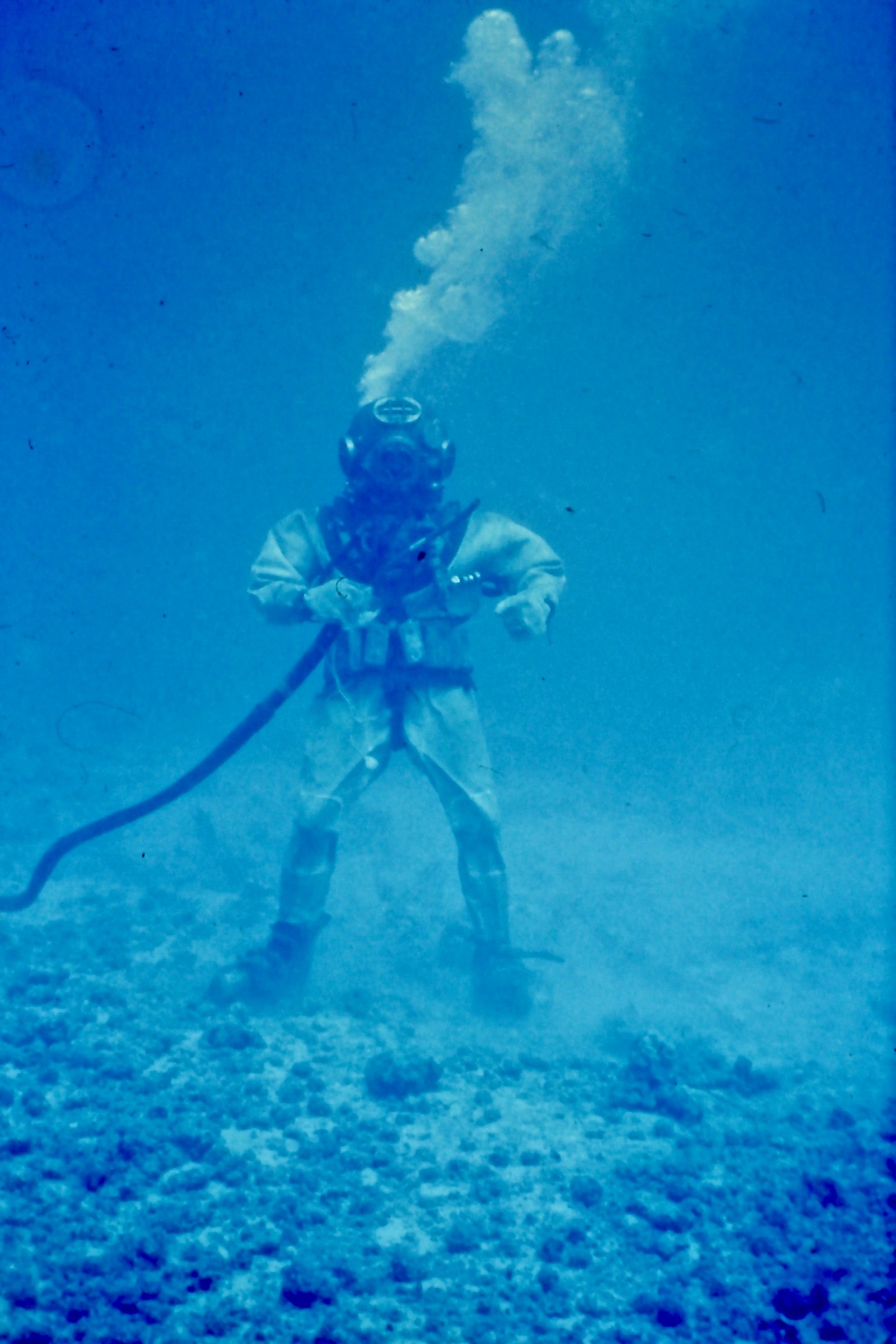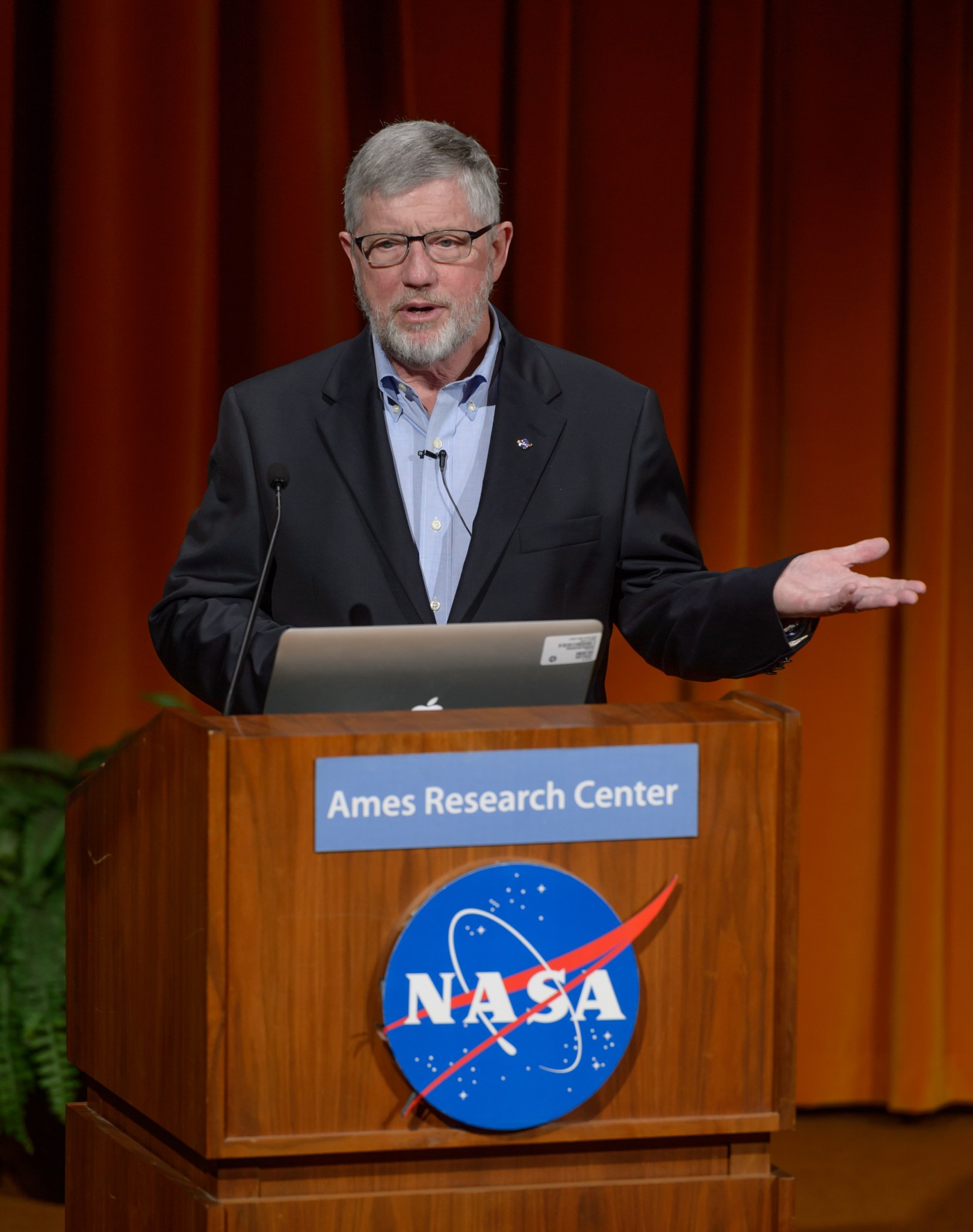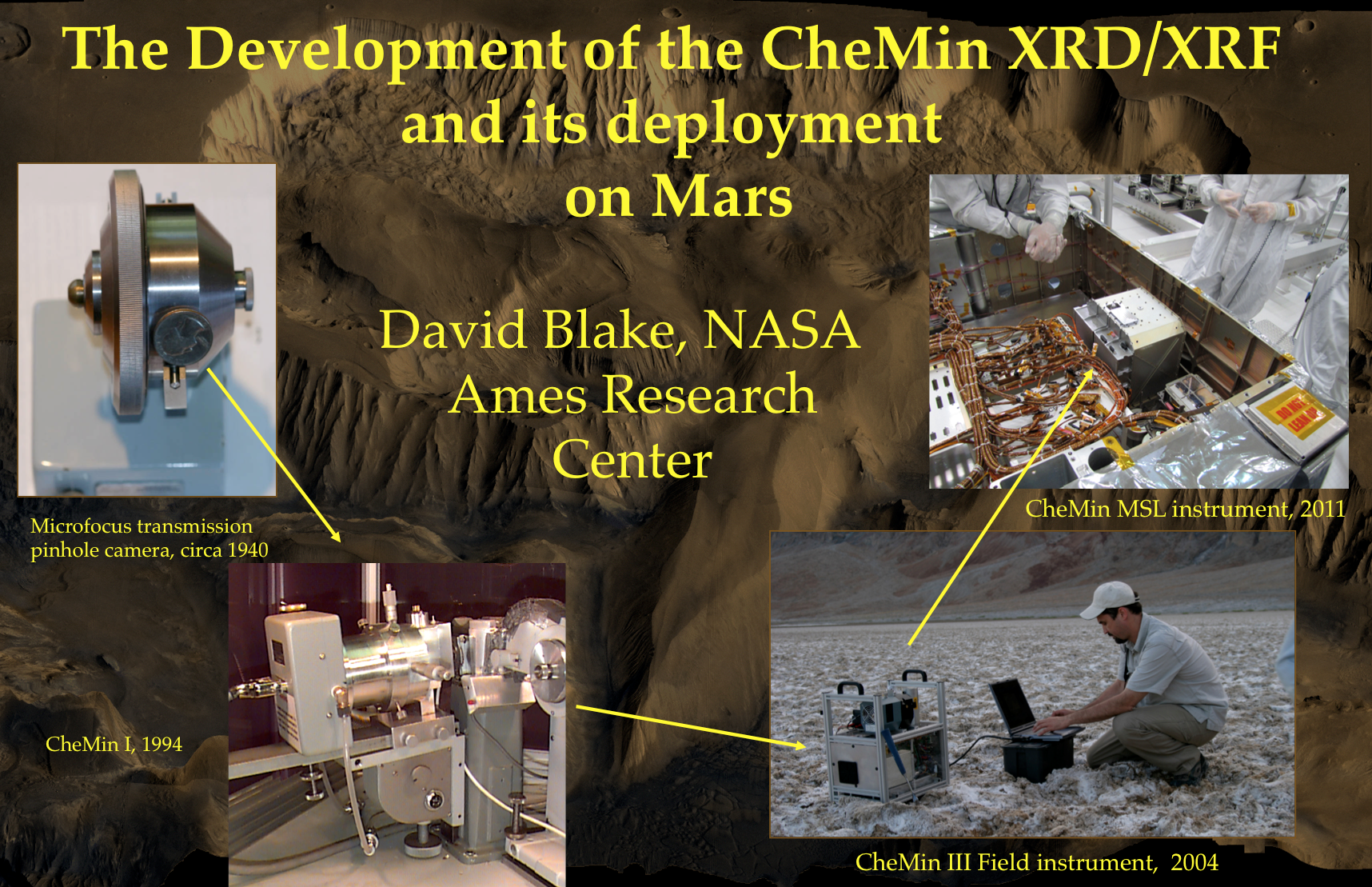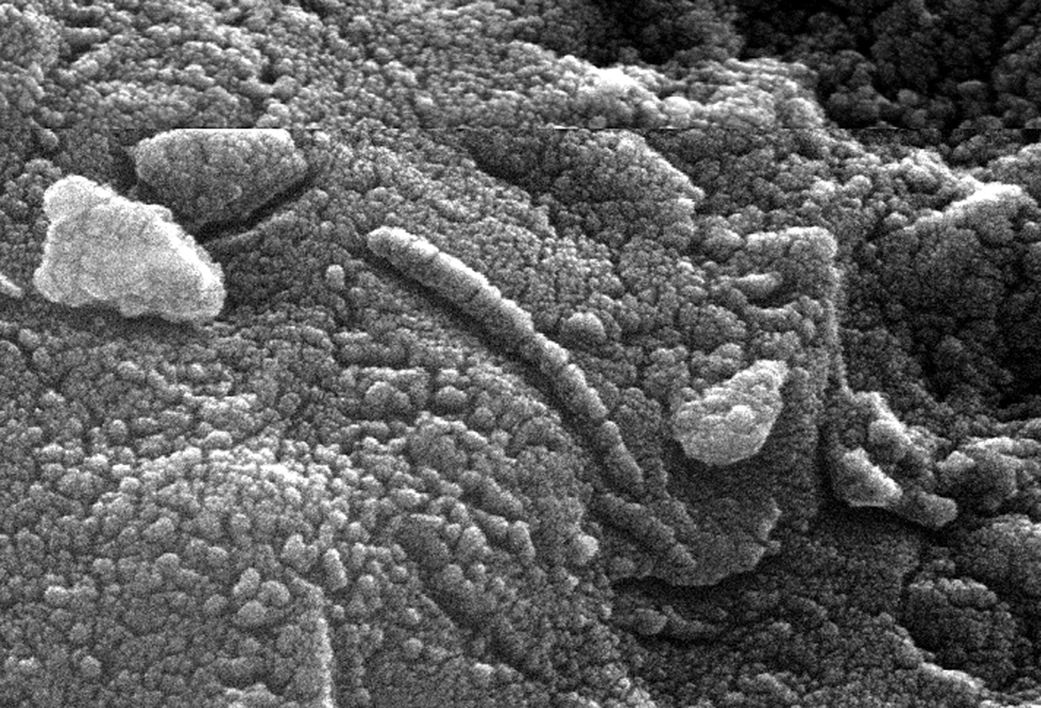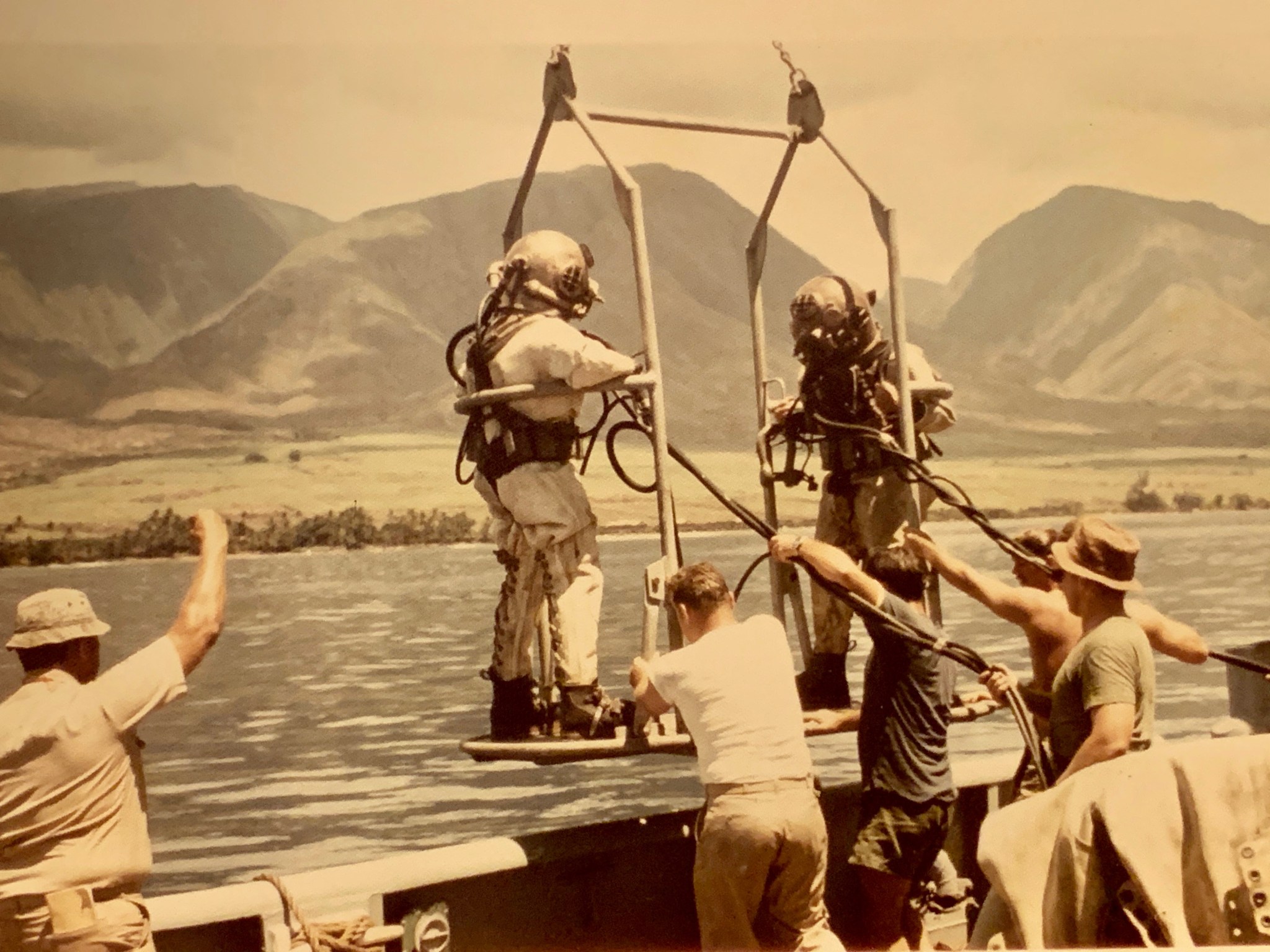We generally start with your childhood, where you were born, where you grew up. Is there anything about your young years that pointed you toward where you are now?
I was born in Bellevue, Washington, just outside of Seattle. I guess the most significant thing back then was that my mother died when I was five. My first-grade teacher, Mrs. Bessor, kind of took me under her wing, and signed me up for the Audubon Society and took me to the zoo and did many things that guided me in that direction. That’s when I started, when I was six, collecting rocks and bird nests, pictures of birds and things like that. I didn’t really know that was science but that’s what I did. Later on, I started doing experiments.
Any brothers or sisters?
One brother, 3 years older, and one sister, 8 years younger.
And did you stay there in Bellevue?
We moved away when I was eleven. We moved down to Carmel Valley for a year, near Monterey.
What precipitated that move?
My dad was an engineer and he had a small business building automated weaving machines. My stepmother wanted to move to Carmel, so we did. We only lasted a year down there, my dad couldn’t market his machines very well in Carmel Valley in 1961, so we moved up to the Bay Area.
At some point when you started making decisions about your education, probably post high school, you pursued a major and ended up with a Ph.D., so guide us through that path and what led you to make those choices?
Let’s see, I actually wanted to go to the Naval Academy, so I went to a military high school: New Mexico Military Institute, Roswell, New Mexico. They had appointments to the military academies, but by the time I graduated, I had different ideas. I did get accepted to Annapolis, but I decided to go to Stanford instead. There, I majored in biology and got a BS in Biological Sciences.
Do you attribute that to your early exposure to rocks, etc.?
Oh yeah, absolutely, that’s pretty much what I wanted to do. Another thing that happened is that I started working at Scripps Institute of Oceanography as an apprentice machinist in the summers; I built pressure cases and free-vehicle ascent buoys to measure sediment, sediment traps and things like that, so when I went to Stanford I was very interested in marine biology, and I thought I was going to be an oceanographer at that point. I didn’t have any money, but I had a scholarship through the Navy. I was in the ROTC program (Reserve Officer Training Corps), and that’s where I met my wife, at Stanford, in a celestial navigation class. I had to take that class because I was an NROTC student; she was doing it because her parents had a sailboat and they were going to Tahiti.
After I graduated and was commissioned in the Navy, I chose hard hat diving, deep sea diving, so I went back for training at the diving school in Washington DC and then I was sent out to my ship in the Far East, a rescue salvage ship. I was Diving Officer, Communications Officer, and later on, I was the Operations Department head, so I spent four years doing that kind of stuff. I generally managed and led 16 divers and ~25 deck sailors. My ship was USS Conserver, ARS-39 – “the fighting C.” It was called that because the divers were always starting fights in the bars when we were in port.
That was your commitment, to do those four. And then you made a decision to not continue doing that, and you ended up in Ann Arbor for graduate school?
That’s right, my wife Carol and I were both interested in graduate school and we applied to sixteen different schools. She was applying in pharmacology and I was applying in geology, but since my degree was in biology, I didn’t have much luck in the geology departments. Carol was the real star, she got in everywhere she applied. We ended up going to the University of Michigan, Ann Arbor, because she got a full scholarship there, and I went to the geology department where I had to complete an undergraduate degree as a prerequisite. So, I took the undergraduate course sequence and then did an MS and a Ph.D. I graduated with a master’s degree in sedimentology and a Ph.D. in mineralogy.
And eventually, you landed here at Ames? It sounds like an interesting story because this is a research facility. It seems like you were headed for earth science more than for space science.
I was. What happened is that both Carol and I were trying to get jobs, but we couldn’t even get interviews in the same state, so we decided we might as well go to someplace we both liked if we were going to be unemployed. We knew the Bay Area was a nice place. I had lived here and we both went to college here, so we moved out without jobs.
What year that might had be?
That was 1984.
We moved to the Bay Area without jobs and we had a one-month-old baby at the time, so I took the first job I could find, at a place called Surface Science Laboratories, doing analytical work on computer chips and things like that. Carol got a postdoc at Stanford, in the medical school, and so she stayed there. I worked for about a year in this job and I just couldn’t stand it anymore, so I quit, and then I was unemployed for about a year and a half. Carol was still doing her postdoc. It was kind of tough. Then one afternoon I and my brother-in-law, Carey who at the time was a wind tunnel mechanic at Ames, were sitting in his backyard having a beer, and he said, “You know, I think they have geologists out at Ames.” He got an NRC booklet for me and that’s how I found out about doing work at Ames. I applied to work with Ted Bunch and Sherwood Chang in meteorites as a postdoc, and then after I finished my postdoc, I was hired into the Exobiology branch, and that’s pretty much it.
At the time I was working with electron microscopes, and they didn’t have an electron microscope in the branch, but there was one in another division that wasn’t being used, so I dragged it over to my lab and set it up. It wasn’t a competitive machine, it was a 1960’s era microscope, so in order to be competitive, I had to do something different. I modified it to work at very low sample temperatures (10 Kelvin), and I worked with Lou Allamandola, looking at the structure of interstellar ice. I put water vapor or other gasses in the machine, froze them down in the amorphous state, then warmed them up at one degree Kelvin per minute and collected electron diffraction patterns to look at structural changes in the ice. Lou did the same experiments but with an IR spectrometer so he could look at the changes in the infrared that corresponded to the structural changes I was seeing. As a result of that work, IR astronomers can identify the crystal structures of interstellar ices based on IR spectra from cold molecular clouds and things like that. That was fun (laughs).
What has been your most interesting work here at Ames? What are you currently working on?
My first big paper was actually pretty exciting, I characterized pre-solar diamond in meteorites. I didn’t discover pre-solar diamond, that was done by Roy Lewis, Ed Anders and others in 1987, but it wasn’t characterized, and so I did the first characterization of interstellar diamond and that ended up being a Nature paper (Blake et al., The Nature of Interstellar Diamond, Nature 1988). That was a nice paper. I liked it a lot.
The way it worked was Sherwood Chang and Ted Bunch were studying meteorites and there were these noble gases that were trapped inside specific minerals in the meteorites when the minerals were formed. They dissolved the meteorites and looked at different residues. They could see that the noble gases persisted in certain residues, so they followed the signal of the noble gas, and at the end, by dissolving everything in hydrofluoric acid, they had about a 100 ppm of this white powder that turned out to be diamond. It was a big surprise. It carries the “Xenon-HL” signature. Of the many natural isotopes of Xenon, Xenon HL is enriched in the high- and low- atomic weight isotopes. This showed that the host diamond formed in the outflow of carbon stars (not our sun, but much earlier).
I did another piece of work that is interesting because I didn’t find what I was looking for, but I found something else equally interesting. I was looking at interplanetary dust that is captured on flat plates coated with silicone oil and exposed in the stratosphere by ER-2 airplanes. The upper atmosphere branch here at Ames also flew wire collectors to collect stratospheric aerosols emitted by volcanoes. I had the idea that maybe there were very tiny interplanetary dust particles that could be captured on those wires. I built a Class 100 clean room in my lab and curated all the aerosol wires from the last 20 years and started looking at them with my field emission SEM (Scanning Electron Microscope). I found that there were tiny particles a few hundred nanometers in size and I really thought they were interplanetary dust, but it turned out they were soot, there were just carbon soot.
From where? From Earth?
Well, that’s the question. I figured out a way to calculate the amount of soot in the atmosphere where the plane flew based on the number of soot particles on the wires, and then I catalogued and measured all the wires that they had from North pole to South pole. And it turns out that the stratosphere is very clean. Even above the regions where they are burning down rain forests in Brazil, soot doesn’t get through the tropopause, the boundary between the troposphere and the stratosphere.
This is carbon soot from earth activity?
I was surprised to find that they actually have tabulations of aircraft fuel burning by latitude and by altitude, so I correlated my results with those tables. The dirtiest corridor of air is actually between New York and London, and it turns out that when you are riding in an airplane, especially in the winter, when you are going over the poles, you are actually in the stratosphere, the stratosphere dips down in the winter time, so this is direct injection of carbon soot into the atmosphere by aircraft. It’s interesting, kind of bookending my research; the first carbon ever made in the universe (interstellar diamond) and the last carbon ever made in the universe (aircraft exhaust). I wrote a paper on that.
Currently, I am building an X-ray microscopic imager for Mars, and an X-ray diffractometer for the moon. I am also working with Brad and Lee Bebout in my branch on element distributions in algal mats and ancient stromatolites in order to characterize possible biosignatures in the geologic record and on Mars.
Do you want to speak about the Mars work you been doing with the rovers?
Sure. I worked about 20 years on this X-ray Diffractometer, which tells you the mineralogy of rocks, and the thing that surprised me most when I came to Ames was that people were talking about how they knew what the minerals were on Mars. So I said, “how do you know that?” And they said, “Oh well, we do infrared”. And at that time, I said, “Well, you can’t do infrared and find out what the mineralogy is, you just can’t do it”. It turns out that you can to some extent, but the only direct way to do quantitative and definitive mineralogy is by X-ray Diffraction. The technique has been around for more than a hundred years, and it is still the one that Earth Scientists use. The reason I knew that and why a lot of people around here didn’t know that, is because they were Planetary Scientists, they weren’t mineralogists. There wasn’t a diffractometer on Mars or any place else, so they used what they could get. There wasn’t even a working X-ray diffractometer at Ames when I got here. That’s when I decided that I was going to build a diffractometer to use on planetary missions. It took a long time. I started in 1989 and it was accepted for flight in 2004, and in the meantime, it took I don’t know how many proposals, probably 20 or 30, and a lot of technological advancement.
In terms of that selection, that is a selection that gave you taxpayer money to conduct your research and put it on a flight, so defending that to the taxpayers, what is the benefit of that type of research? How is your work relevant to the Ames and/or the NASA mission?
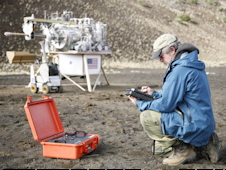
For XRD? For NASA’s missions, XRD is the only definitive way of identifying mineralogy and it’s important to know the science of it. Minerals are thermodynamic phases, and if you know the minerals, you know the conditions under which they formed. In Gale crater, we are rolling on a surface that is 3.7 billion years old, because Mars did not have extensive plate tectonics, it’s not like on the Earth, where the surface of the Earth is resurfaced about every 180 million years, except for just a very few areas, so if you wanted to find 3.7 billion-year-old rocks on the Earth, there’s only one or two places where you can find those rocks, and those rocks are heated and metamorphosed to the point that you almost can’t tell if they are sedimentary or volcanic. So, we are on a surface where we can drill holes, and it’s like the stuff is almost fresh. And the thing about Gale crater is that it clearly had a lake, we know that now, it had a lake and it was habitable at about the time that we knew organisms lived on the Earth, so at the very same time that microbes lived on the Earth, here is a habitable environment on Mars, that could have also had microbes. We know that because we know the minerals that comprise the rocks that we drilled.
Almost every research avenue that we’ve discussed with people in these interviews seems to end up trying to answer the big question: where did life come from, how does it originate, is it elsewhere, and so forth.
That was a big deal, and you simply couldn’t do that without mineralogy, and you can’t do mineralogy without an X-ray Diffractometer. That’s just the way it is, I’m not making it up! (laughs)
You were just the right guy in the right place with the right qualifications! You probably never thought that you were eventually going to be applying this expertise and knowledge to look at rocks on another planet and looking at them through a lens of bioscience.
Yes, and I never really thought that I’d wind up in the exobiology branch, where clearly my biology background was helpful.
The other interesting thing is that the diffraction was actually discovered by Max von Laue in 1912 when the first paper came out in June of 1912, and our first paper on X-ray Diffraction on Mars happened in August 2012, so we were about two months from the 100th anniversary of the original discovery of X-ray Diffraction. 2012 was the International Year of Crystallography, UNESCO named it that, and then I got invited to do the keynote speech in Paris when they opened it up, so that was pretty cool.
What is a typical day like for you? Do you do fieldwork?
I actually do, or I used to.
There is another interesting story when I was a postdoc with Ted Bunch, they had the ALH84001 meteorite, made a big splash about microbial life on Mars. That meteorite had these little carbonate globules, and we were very interested in finding out if they were caused by life or not. Ted Bunch had the habit of ripping old articles out of Nature magazines that had to do with meteorites, so on the back page of one of the meteorite articles from 1987 was a paper by Hans Amundsen, talking about carbon from the mantle and showing these pictures of mantle xenoliths that had little globules of carbonate. They looked identical to the Mars meteorite carbonate globules, so I contacted Hans Amundsen, and he immediately sent me about a 100 kg of these things, so we wrote a paper on that. It was the only known Terrestrial analog for the ALH84001 meteorite, that particular meteorite. Hans and some other people started doing expeditions every year to go out to Spitzbergen, where these things were found, and they started inviting me. I’m not a field geologist but I did go up there, and I took some of my portable XRD’s up there to analyze rocks in situ, so yes, I did do some fieldwork.
I try to do experiments every day, but quite often I am consumed by paperwork – VPP, required training, writing coop agreements, working on future grants. I also try to write abstracts and papers.
What do you enjoy most and least about your job?
The best thing is doing the work, the worst thing is the bureaucracy, the paperwork, the VPP, the mandatory classes, the safety inspections…
Would you believe you’re not the first one to say that?
Do you have a favorite memory from your career? Perhaps a research finding or breakthrough, or an unexpected research result?
I enjoyed the first time we got a result from my instrument on the MSL rover on Mars. It was a validation of >20 years of work.
If you weren’t a bio-geologist at NASA, what would your dream job be?
When I did my Ph.D. in mineralogy, I actually did my thesis on biomineralization. That’s how organisms grow their shells. I was a bit of an outlier in my department, no one was doing that, and when I graduated my advisor basically told me that I was “neither fish nor fowl,” and that maybe I should apply to dental schools for a job because no one could figure out why anyone would care about this. But that was what I really wanted to do, I wanted to understand how organisms make hard parts. And people still don’t know how that works. It turns out that NASA is very interested in biomineralization. Bone loss is one of the things keeping us from long-duration spaceflight.
You’ve pursued an interesting path. What advice would you give to a young aspiring person who wants to have a career like yours?
I would say: Choose your own ideas, don’t do what anybody tells you to do. The worst thing to do is to be a follower. And when you choose your own ideas, remember that no one is going to support you or tell you how great you are doing. The last time that’s ever going to happen is when your parents told you that. It turns out that you are pretty much on your own, and you need to have a passion for whatever you choose to do. The bad news is that nobody is going to thank you, and no one is going to tell you what a wonderful job you are doing until you succeed. The good news is that the things you come up with are your own ideas and they are new. The worst thing in the world would be to show up and just do what someone tells you to do.
Would you like to share anything about your family: kids, pets, trips, etc.?
2 kids, 1 dog, I enjoy sailing.
What do you do for fun? (hobbies, talents, sports, etc.)
I’m supposed to make some stuff up right? (laughs)
I work on old British sports cars; I’ve got a ‘74 MGB that I’ve done a frame-off restoration of. I have a 911 Porsche that I raced until I had some heart problems; I also used to play ice hockey until I had heart problems.
That’s interesting because we’ve had people tell us that what they miss in their work is doing something hands-on. So they like to have a hobby where they do something hands-on, building something or rebuilding something, so that’s not unusual.
But I do hands-on stuff all the time. We have three newly funded grants to build instruments, there is never a dull moment.
What’s next in terms of your career?
I got funded for an instrument called MapX, it’s an imaging x-ray fluorescent spectrometer that I proposed for Mars2020 against PIXL (Planetary Instrument for X-ray Lithochemistry).
They chose PIXL rather than MapX, but I did get it funded through the PICASSO program, and now the MATISSE program. I’m funded at a $1M a year to develop it and we’ve got some really nice prototype instruments. The portable version that we built was actually used by an art historian in France to analyze French impressionist paintings. We have a paper out on the analysis of a French impressionist painting with our instrument. MapX is going to be TRL6 (Technology Readiness Level 6) in a year and it’s a good machine, it’s a great machine. I also got funded through the DALI program which is for lunar instruments and we are building a reflection style XRD. We are starting to do that work and that’s going to wind up, I hope, on the moon in one of the early missions. We are building a planetary X-ray CT scanner, it’s more Philippe Sarrazin’s instrument than mine, he has an SBIR Phase 2 (Small Business Innovative Research program) that I’m involved with. It will take a core of rock and rotate it and give you a 3D image of what’s inside, whether it’s got cracks or you can see the minerals inside and all kinds of stuff. We also have an Ames IRAD proposal funded to build a Venus XRD (CheMin-V). CheMin-V is in the strawman payload for the Russian Venera-D mission, and we are working with a group from Goddard and JPL that is putting together a Venus Flagship mission for the decadal survey, and that will hopefully include our XRD.
What accomplishment are you most proud of that’s not science-related?
I was an unrestricted line officer and a Navy hard hat diver at the end of the Viet Nam war.
Who or what inspires you? (need not be space-related).
Certainly, Carl Sagan has always inspired me for space science, the Pale Blue Dot was one of the most fantastic talks I ever heard. I actually heard Carl Sagan give that talk in one of the triennial exobiology meetings. Carl Sagan was funded in our program, and he gave a keynote speech in the early ‘90s. I think it was the first time he actually presented that talk about the pale blue dot. I was sitting in the front row when I heard it, that was a big deal.
Former president Jimmy Carter. I am a member of the Carter Foundation, an organization that among other things, eradicated Guinea Worm and River Blindness in Africa.
Do you have a favorite space image?
Well, I mentioned the pale blue dot, and that I heard Carl Sagan describe it for the first time at an Exobiology Science Conference when I first started at Ames.
How about a favorite quote?
Carl Sagan’s paragraph about the pale blue dot.
Thank you.
Interview conducted by Fred and Sara on 08/19/19.






























